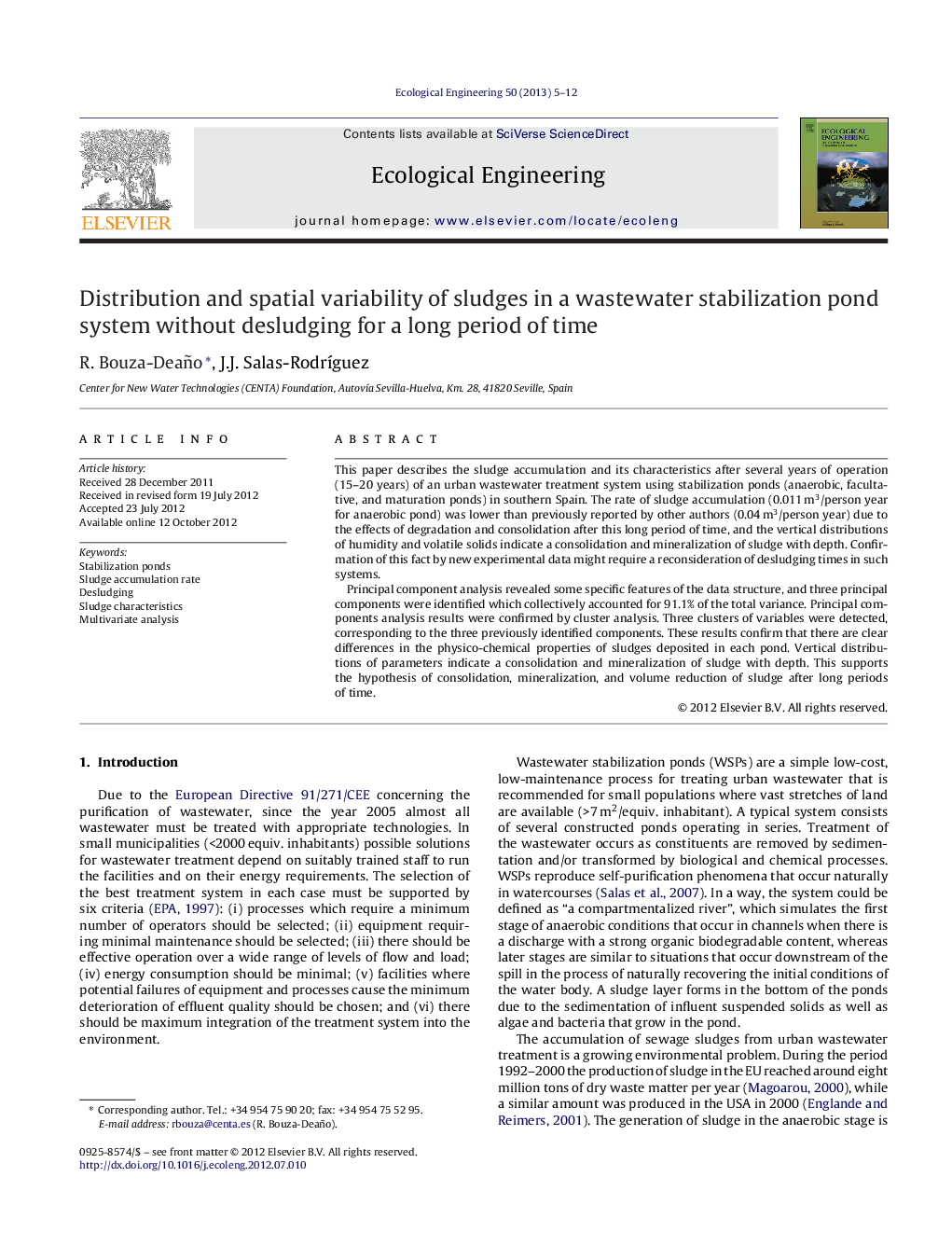| Article ID | Journal | Published Year | Pages | File Type |
|---|---|---|---|---|
| 4389860 | Ecological Engineering | 2013 | 8 Pages |
This paper describes the sludge accumulation and its characteristics after several years of operation (15–20 years) of an urban wastewater treatment system using stabilization ponds (anaerobic, facultative, and maturation ponds) in southern Spain. The rate of sludge accumulation (0.011 m3/person year for anaerobic pond) was lower than previously reported by other authors (0.04 m3/person year) due to the effects of degradation and consolidation after this long period of time, and the vertical distributions of humidity and volatile solids indicate a consolidation and mineralization of sludge with depth. Confirmation of this fact by new experimental data might require a reconsideration of desludging times in such systems.Principal component analysis revealed some specific features of the data structure, and three principal components were identified which collectively accounted for 91.1% of the total variance. Principal components analysis results were confirmed by cluster analysis. Three clusters of variables were detected, corresponding to the three previously identified components. These results confirm that there are clear differences in the physico-chemical properties of sludges deposited in each pond. Vertical distributions of parameters indicate a consolidation and mineralization of sludge with depth. This supports the hypothesis of consolidation, mineralization, and volume reduction of sludge after long periods of time.
